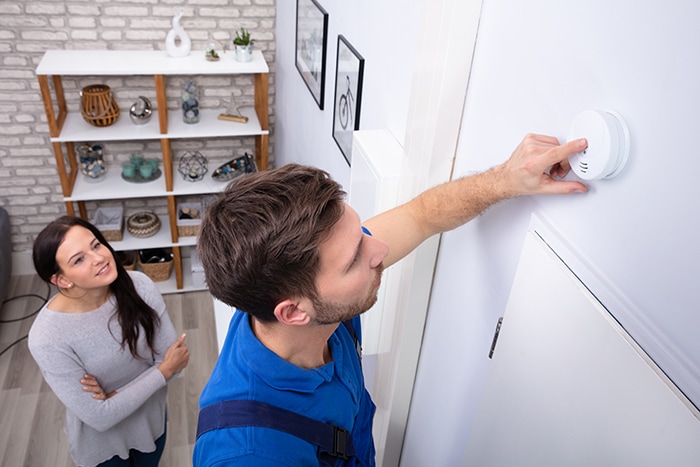62368-1 Safety Standard Transition is a Critical Update

Image Source: FOTOGRIN/Shutterstock.com
By Tommy Cummings, Mouser Electronics
Edited June 18, 2021 (Originally Published October 26, 2020)
Since the end of 2020, a new power safety standard is in place for companies marketing their computing/communications equipment and audio-visual products.
On December 20, safety standards 60950-1 and 60065-1 were replaced by 62368-1. The transition might sound like a bookkeeping matter to some, but the change has profound significance in power safety regulation. It adopts fundamentally different engineering principles and terminologies to the product-safety compliance landscape in North America and the European Union.
62368-1 focuses on risks that might occur and gives manufacturers more leeway on designing improved protections. The standard also makes products future proof by ensuring that all possible hazards from the product have been considered. 62368-1 also takes a proactive risk-based approach by identifying hazards and testing the safeguards' effectiveness based on performance testing instead of a reactive incident-based perspective.
62368-1 is the standard recognized by the International Electrotechnical Commission (IEC), European Standards (EN), and Underwriter Laboratories (UL). Issued in 2010, 62368-1 covers products, components, and sub-assemblies that formerly came under the scope of 60950-1 and 60065-1.
Today, 60950-1 and 60065-1 are in widespread use and cover most power-based products, but some existing products will need to be re-investigated to achieve certification. 60950-1 is the information and computer technology (ICT) safety standard. 60065-1 is the audio/video (AV) and similar electronic apparatus standard. 62368-1 applies to the end-user product and components and subsystems such as power supplies.
Manufacturers who wish to place products on the market must prepare their products to comply with 62368-1 to ensure compliance. A grandfathering period was not applied after the conversion deadline. Even if a component is certified to 60950-1, labs will be required to conduct tests to determine whether an end product is consistent with 62368-1 requirements.
As the distinction between information technology equipment and audio/video products becomes blurred–and, in some cases, begins to consolidate–an updated standard is needed to regulate both industries. This white paper breaks down what some of these product safety changes could mean for design engineers:
How Long Has This Change Been in the Works?
IEC/NE/UL standards committees have worked toward an updated common standard for several years. 62368-1’s first version was published in 2010. The NE 62368-1’s second edition has been in use since 2016. Other regions, including China, India, and South America, continue to evaluate 62368-1 adoption.
The 62368-1 transition is the latest evolution of Hazard Based Safety Engineering (HBSE) principles, which has evolved into the new approach as more affordable smart devices have emerged for use in home offices and home entertainment.
HBSE principles are primarily performance-based rather than prescriptive. Being hazard-based means that it is based on the energy sources within the equipment. Traditional safety standards and today's standards are incident-based, meaning an incident, either real or the result of experimental probability, can trigger the development of a new standard. This translates into a higher level of flexibility for product designers as product technologies and constructions continue to evolve.
Also, 62368-1 references energy sources applicable to ICT/AV electrical equipment (Figure 1). These sources encompass electrical energy, thermal energy (such as hot accessible parts), chemical energy (electrolytic reactions or poisons), kinetic energy (moving parts), and radiated energy (such as optical or acoustic energy). Based on these sources, the standard then specifies what constitutes an acceptable voltage, for instance, and what type of protection is required.
IEC 62368-1 Should Mean Safer Design Flexibility
A product redesign depends on the product and available data, but a redesign will be rare. 62368-1 could give product designers more flexibility in product design and evaluation to keep pace with technology without requiring expensive and time-consuming revisions.
62368-1’s intent is to allow designers more flexibility while at the same time requiring exhaustive analysis to determine whether their products are safe to use and cannot cause bodily injury or fire.
This standard identifies three classes of hazards:
- Class 1 (not painful, but might be detectable; ignition not likely),
- Class 2 (painful, but not an injury; ignition possible) or
- Class 3 (injury; ignition likely).
In the early development of 62368-1, components and sub-assemblies were subject to being certified to the new standard before it takes effect. However, a new standard provision enables companies to continue using their inventory of 60950-1 or 60065 parts in certified products to be 62368-1.
HBSE principles allow 62368-1 to introduce new and innovative construction methods and technology without first needing to be amended. This is good news for product designers.

Figure 1: An example of basic safety working with functional safety: A smoke detector must be designed to monitor smoke when it rises to the ceiling without the device catching fire or falling apart. The software associated with the detector must not stall or crash, which would affect the detector itself. (Source: Andrey_Popov/Shutterstock.com)
How Does Basic vs. Functional Safety Apply to 62368-1?
Applications of 62368-1 mean safety levels in various smart technologies, especially those when hardware and software integration must be considered. Products are increasingly relying on physical components and software to work together and function safely and reliably. This means two types of safety are in play–basic and functional.
Basic safety is defined as freedom from unacceptable risk caused by physical hazards resulting from the product's physical construction or design. This includes fire, electrical shock, or environmental damage.
An example of basic safety working with functional safety: For a smoke detector to work, it must be designed and constructed to monitor smoke when it rises to the ceiling without the device catching fire or falling apart. An added layer is the software associated with the detector. It's a safety-related application that must not stall or crash, which would affect the detector itself and render it useless when a fire breaks out.
What About International Compliance?
62368-1 has been in development since 2005 when the European Computer Manufacturers Association created ECMA 287. In North America, UL will proceed with a soft transition, meaning new submissions for certification will be investigated against UL/CSA 62368-1. Existing products certified by the former standards will not be subject to Industry File Review (IRR).
62368-1 compliance requirements are not yet universal. South Korea and Japan have adopted the standard while other countries, namely China and India, have not. This can be an issue for manufacturers that intend to export their products internationally. For example, if manufacturers have a CB Scheme to sell their products into countries that have not adopted 62368-1, they might be required to obtain a dual CB Scheme, which could mean additional effort and cost. EN 60950-1 will be withdrawn from circulation and no longer be valid in Europe. All products subject to the European Union's low-voltage direction must be provided with a Conformitè Europëenne (CE) label for circulation in Europe. In North America, including Canada, the UL 60950 remains valid, and the UL 62368-1 will only be obligatory in the event of new certifications. Devices certified in accordance with UL 60950 can also be put into circulation after Dec. 20.
Conclusion
A decade ago, who would've thought that insulating liquids would be taking on increased roles in cooling technology? Or wireless power transmitters? Or Internet of Things devices with advanced software? 62368-1 compliance is imperative with the continued development of new technologies, such as smartphones and smart appliances. Of course, the old standards addressed safety, but they didn't evolve as rapidly as the technology. The unification of the old standards under the new 62368-1 is a harmonizing approach to safety standards compliance based on identifying hazardous energies and testing the effectiveness of their safeguards.